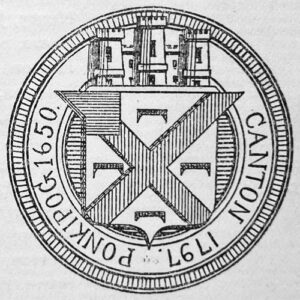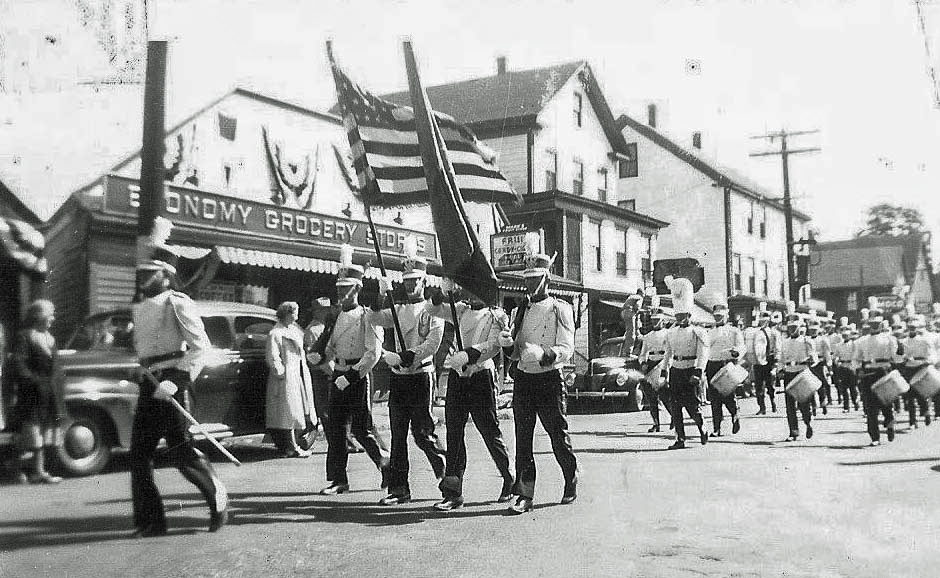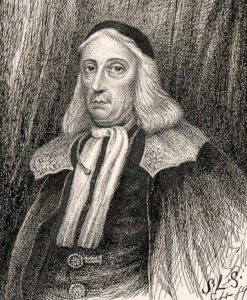True Tales: Breaking Up Is Hard to Do
By George T. ComeauIt passed without any notice. February 23, 2022 — two hundred and twenty five years to the day that Governor Samuel Adams put pen to paper and signed the act that separated what is now our town from the mother town of Stoughton — came and went without fanfare or even so much as a mention.
This unfortunate oversight was corrected last Sunday by the Canton Historical Society.
Officially incorporated in 1797, Canton’s roots as a European settlement actually began more than a century earlier, when small groups of settlers began moving to the fringes of what was then Dorchester. The territory now comprising the town of Stoughton was part of an enormous tract of land known as the “New Grant” to Dorchester, which was created in 1637. That tract extended from “ye Town House to ye Plymouth Line.” Its north end was near the present area of Readville and its southern border was on what is now the southern boundary line of Norfolk County. On average, the width of this tract was 10 miles wide.
On December 15, 1715, the region encompassing the communities of Stoughton and Canton and a handful of adjacent towns was organized as the “Dorchester South Precinct.” Part of this precinct was set off to Wrentham in 1724, and on December 22, 1726, the territory spanning all of present-day Canton, Sharon and Stoughton and the greater part of Foxboro was incorporated as the town of Stoughton, taking its name from William Stoughton, the former acting governor of the province of Massachusetts Bay.
The naming of the town after Stoughton has a rather dark association. Born in Dorchester in 1631, William was a son of Israel Stoughton, one of the Dorchester proprietors. He graduated from Harvard College in 1650 at the head of the class, and soon afterward he went to England, where he enjoyed a fellowship at Oxford and completed his studies for the ministry. In 1662 he returned to Massachusetts and spent the next several years as a preacher before eventually turning his attention to politics and land development.
In 1692, at the urging of influential clergyman Increase Mather, Stoughton was appointed lieutenant governor of Massachusetts Bay, and in June of that year he became chief justice of the colonial courts and would preside rather brutally over the Salem witch trials. Historian John Stetson Barry, in The History of Massachusetts, described him as a “Puritan of the commonwealth mould; of phlegmatic temperament; rigidly attached to the Puritan creed; thoroughly versed in the knowledge of men; knowing how to accommodate himself to a variety of circumstances, yet superior to all.”
During the now-infamous witch trials, Stoughton was ruthless in his role as chief judge and prosecutor, sentencing 19 people to death by hanging. According to Barry, while many of the key players in the trials would go on to publicly acknowledge their error, “Stoughton alone refused to retract, and to the day of his death never regretted the part he had taken.”
The town that took his name was largely managed by the church, and the parishioners were called to meetings to manage the governmental functions. The first town meeting in Stoughton was held on January 2, 1727, and the great New England town meeting as a governance structure still prevails today. Meetings were held at the first meetinghouse, which was then located in Ponkapoag in the place of the English Burying Ground. An engraved stone marks the gates to where the building once stood. The building may have been built by John Eliot as a gathering space for his preaching of the gospel to the natives.
Rod by rod, acre by acre, the European settlers began thrusting their laws upon the native population. Deeds were drawn, and the indigenous people signed away land that in fact they did not own. The concept of land ownership was a purely English contrivance based in medieval laws that must have been poorly understood by the people who had inhabited this region for thousands of years. Tract by tract, the deeds demonstrate a systematic record of ownership that began to shape the boundaries of the present-day towns of Norfolk County.
The record, certainly written by the English, tells us that “William Ahauton, Samuel Momentaug and Amos Ahauton, Indians of Ponkapoag in 1708, in behalf of their tribe, thanked the town of Dorchester for its care of them and their interests, in settling the boundaries between them and their white neighbors.” The native men further agreed at that time to “give up all their right to that parcel of land about the Ponkapoag meeting-house, containing about three acres, ‘for a burying place and training field.’”
For 55 years the town of Stoughton was undivided. But in 1782 the precinct of what is now Stoughton voted at town meeting to take measures and divide the town. At that time, several ideas as to the name of the new town were bandied about. “Freedom” and “Danbury” were offered up. The Great and General Court seemed inclined to allow the split, but a counter petition was offered and the idea simply faded away.
After the first failed attempt, a compromise was sought — that being a proposal to hold one-third of the town meetings in what would have been the new town. That idea was quickly shelved. The balance of power between North Stoughton, the part which is now Canton and was historically the seat of government, and the Second Parish, the Stoughton of today, was clearly acrimonious.
The distance to travel between the two precincts was made difficult by the topography, and much time was lost trying to traverse the wetlands and marshes. By 1795 a new petition was made, this time by the people living in what is now Canton, who noted, “There is a large body of land lying upon and contiguous to the line between the North and South Parishes, which is and always will be incapable of any valuable improvements, which throws the bulk of the inhabitants of said Parishes a great distance from each other, which peculiar circumstance makes it always inconvenient and sometimes impracticable for the inhabitants of either of said Parishes to attend town meetings as they’ve been held for some years last past, by reason of the great distance of way and sometimes impassable roads.”

Canton’s first town seal was designed in 1882. Thirteen years later, Stoughton was added and it remains there today.
Several committees were formed to address the question of the breakup. Petitions and counter petitions swirled. It was highly controversial for the fact that industry, taxes and even fish would need to be divided and accrue to one town or the other. The part that is now Canton was highly desirable for many reasons, not the least of which was the capacity for downstream water rights. By the summer of 1795, 143 members of the First Parish had signed a petition to separate from Stoughton. A counter petition was sent in January 1796, and the General Court sent three men from nearby communities to make a recommendation. After four days of hearings and “vigorous discussions,” a report was released favoring the split.
The venerable Canton historian Daniel T. V. Huntoon wrote, “Again, it may be asked, why was the ancient and honorable name of Stoughton not kept by the old and long established settlement, and some other name given to the Second Precinct, the comparatively newly settled neighborhood?” The answer was that the First Parish was so anxious for separation that they were willing to sacrifice their “honorable and historic associations for the sake of independent municipal government.” On a whim, one influential man chose the name “Canton.” Elijah Dunbar said that this town was directly antipodal to Canton, China. This is not true, yet people agreed and we became the town of Canton on February 23, 1797.
On March 6 of that same year, the people of Canton came together for the first time and elected town officers. A conference was held at a local tavern and Stoughton took the ancient records of the town clerk and the clerk’s desk as well as the treasurer’s boxes and the box of weights and measures. Today the town seal still bears the name of Stoughton in deference to our roots.
This past Sunday, members of both the Stoughton and Canton historical societies gathered at the Canton Public Library and raised a glass of cider to each other in an informal birthday celebration. A cake was cut, Happy Birthday was sung, and more than 370 years of co-joined history was celebrated. Happy Birthday Canton — Huzzah!
Short URL: https://www.thecantoncitizen.com/?p=93733












